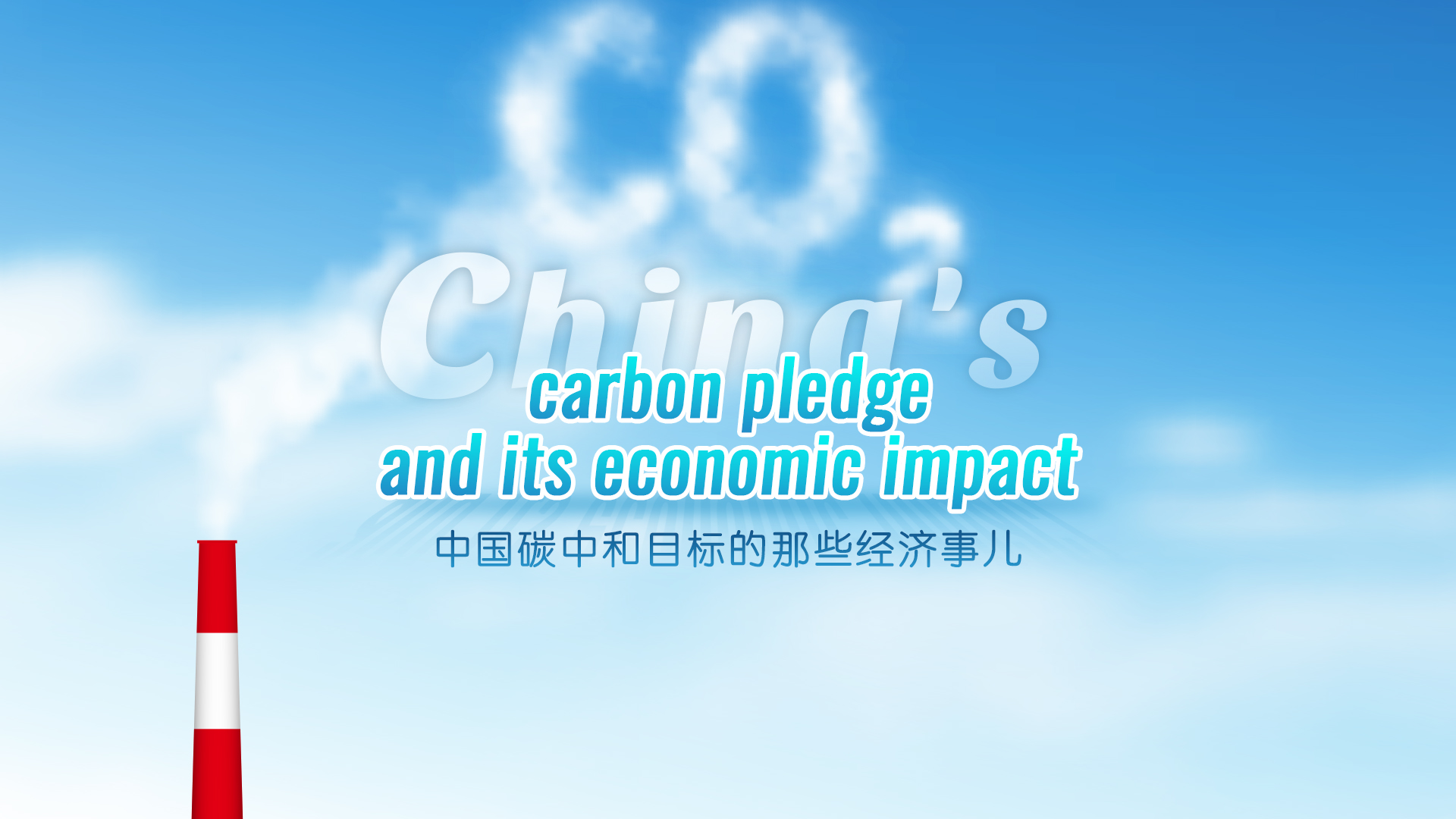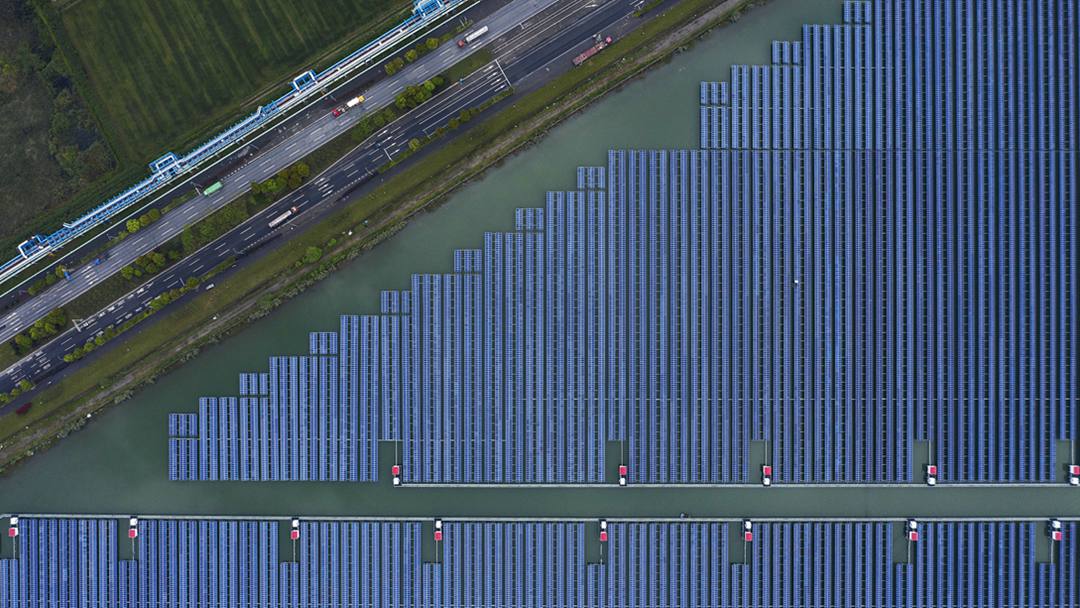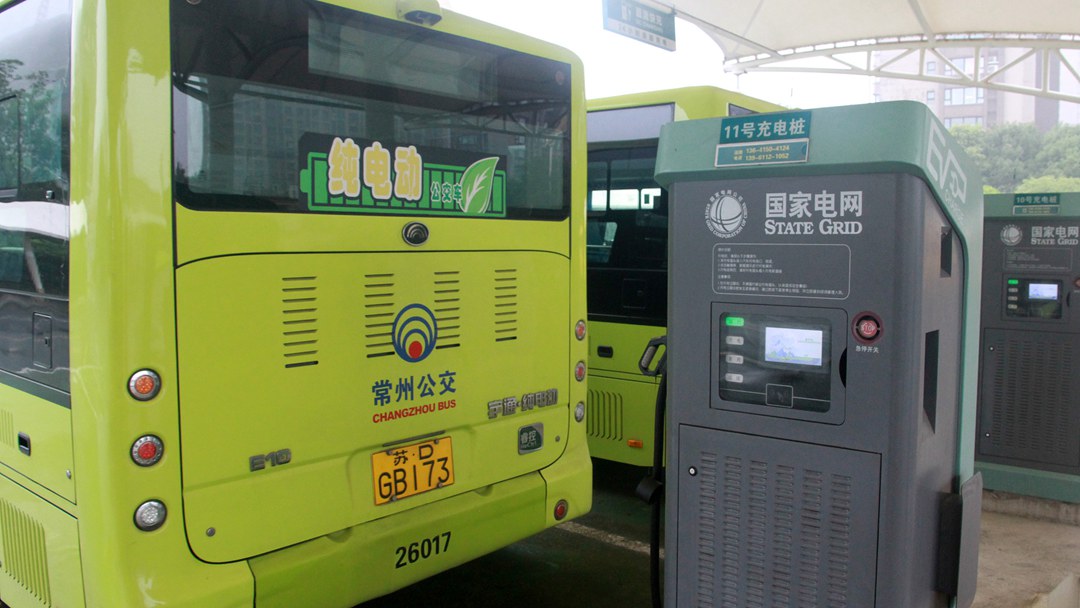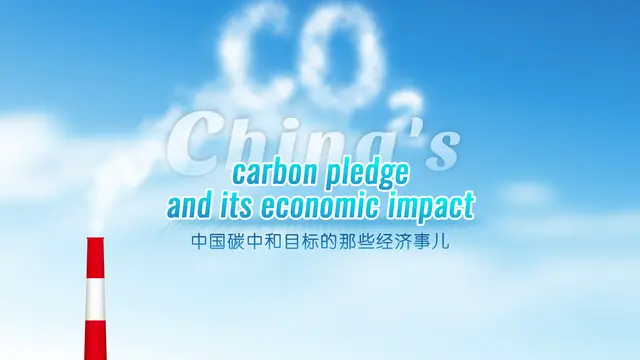05:00

China has rolled out new interim rules for the national carbon emissions trading market that went into effect on Monday, in an effort to speed up carbon emissions cuts under the Paris climate accord to achieve net-zero emissions in 40 years.
China pledged for the first time to have CO2 emissions peak before 2030 and achieve carbon neutrality before 2060, Chinese President Xi Jinping announced last September in an address delivered via video link to the UN General Assembly.
Xi reiterated the pledge when delivering a speech at the virtual Davos Agenda event held by the World Economic Forum last Monday, saying that "China is drawing up action plans and taking specific measures to make sure we meet the set targets."
The pledge created a sensation in the international community, as China's decision played an important role in accelerating the world's transition away from fossil fuels. It also suggested there would be tremendous changes in the country's economic pattern.
How the global economy might react
"The international community was caught by surprise, more than that was shocked," Joe Colombano, economic adviser to former UN Secretary-General Ban Ki-moon told CGTN. Although over 60 other countries have made similar pledges, they have a much smaller fraction of the impact that China will have on the global scene, he added.
China is the world's largest energy producer and consumer. Its carbon emissions accounted for 28 percent of the world's total in 2019, according to statistics database Statista. "Not all of the emissions that China creates are for itself though," said Max Song, CEO of Carbonbase, a Hong Kong-based fintech platform to effect actions against climate change.
Song explained that China is the manufacturing powerhouse that powers a lot of products consumed globally.
"So by helping factories and companies reduce their climate footprint in China, we are also helping reach the rest of the world," he said.
There's likely to be a positive spillover effect of China's impact, as other countries may try to catch up with China and be committed to similar ambitious pledges, Colombano said when talking about how the global economy might react.
Japan and South Korea joined China in pledging to become carbon neutral by 2050. U.S. President Joe Biden reversed former President Donald Trump's environmental agenda and signed the country back into the Paris Agreement hours after his inauguration.
The Paris Agreement was reached in 2015 within the United Nations Framework Convention on Climate Change, aiming to limit global warming to well below 2 degrees Celsius, but preferably to 1.5 degrees Celsius, compared to pre-industrial levels.

Photovoltaic panels stand in a floating solar farm in this aerial photograph taken on the outskirts of Ningbo, east China's Zhejiang Province, April 22, 2020. /VCG
Climate actions can drive growth
The concept of carbon neutrality, which refers to net-zero carbon emissions, is an opportunity for employment, growth and economic transformation rather than an economic burden.
Green development of sectors such as renewable energy, construction, transportation and garbage disposal in China can bring more jobs by 2030, with employment increasing no less than 0.3 percent, according to the International Renewable Energy Agency.
According to an estimate by Boston Consulting Group, China would need 90 to 100 trillion yuan ($14 trillion to $15 trillion) in investment between now and 2050 to support its carbon neutrality agenda and make changes possible.
The capital needed to be injected into the Chinese economy in order for it to meet its pledge is likely to result in a sustained growth rate for China in the next 5-10 years, said Colombano.
"I've seen estimates around 5-6 percent year on year," he said. "All sectors of the economy will be affected by this huge push towards decarbonizing the economy, not just the energy sector, but also the infrastructure sector, the agriculture industry and all kind of services."
The country has made significant strides in recent years in its low-carbon transition, deploying renewable energy on a massive scale. It has 30 percent of the world's installed capacity of renewable energy, and the stock of new energy vehicles in China is more than half of the world's total, according to the Permanent Mission of China to the United Nations.

Public charging facilities built by the State Grid for new energy vehicles are seen in Changzhou, east China's Jiangsu Province, July 18, 2020. /VCG
Carbon market's leverage on climate action
All these transformations will also require the government to implement policies that can incentivize individuals and businesses to reduce their own carbon footprint. China's long-awaited national emissions trade scheme is such a market incentive.
The scheme imposes carbon emissions permits on businesses, and those whose emissions are below the permits will be able to sell their surplus quotas on the market as a reward for reducing emissions, and those that overshoot it will have to buy additional quotas.
After years of trials, China's national carbon market has moved up on the government's agenda, with the first compliance cycle starting from January 1 and covering the emissions of 2019 and 2020 for 2,225 power firms.
It is expected that eight key energy-consuming industries like steel and petrochemical will be included in the scheme with total emission quotas of 5 billion tonnes during 2021-2025, according to the Shanghai Environment and Energy Exchange.
Carbon markets and their promise in driving climate action have "been around for a while and they're yet to achieve the full potential. But things are turning. This is happening because demand is growing, as more and more organizations and corporates commit to becoming carbon neutral and reducing the environmental footprint," noted Colombano.
The launch of Ant Forest on online payment platform Alipay is one of the most notable examples of Chinese companies that are spearheading innovation in climate action. Alipay users who participate in the carbon footprint reduction program accumulate "green energy" points when they choose to perform certain activities like taking public transport or paying utility bills online. Those points can then be redeemed to help plant trees.

Volunteers are unloading saplings at a tree planting site in Yinchuan, northwest China's Ningxia Hui Autonomous Region, April 13, 2020. /VCG
"From Bytedance to Meituan to Pinduoduo, we see a future where China's leading tech companies can actually play a role in increasing the awareness and engagement that individuals have to their sustainable and climate future," Song said.
The biggest challenge is different standards
The need to transform "brown" economies to "green" economies provides lots of opportunities for green debt and equity investments into new technologies and companies, according to Jason Tu, co-founder and CEO of MioTech, a Hong Kong-based fintech firm that empowers sustainable finance.
More and more technology startup companies are developing solutions to meet government agenda and priorities, like clean and renewable energy, low carbon construction, waste clean-up and removal, sustainable farming and circular business models, according to Catherine Wu, head of IBM Data and AI Lab at China.
"Those cleantech are the opportunities for investors," said Wu.
However, Tu noted the challenges facing the financial industry in China due to climate change.
"The biggest challenge is the different standards. The global financial industry needs to speak the same language. This is especially true for new areas like climate change where different standards are being used for risk, compliance, and regulatory moves," Tu told CGTN.
As China's market becomes more open, it will gradually be brought into line with international standards, said Deyi Wu, a senior researcher and product manager at WeBank's AI department.
Technologies to slow climate change
Technology has an equally huge potential for impact. For example, carbon capture and storage techniques are receiving increased attention in the energy and manufacturing sectors, by which wasted carbon dioxide can be captured and later released where it does not enter the atmosphere.
It is also used to decarbonize transportation and agriculture industries. China's transportation sector sees a fast adoption of electric vehicles with government subsidies and support. Meanwhile, there are increasing technologies to help design traffic patterns and routing inside cities.
Farming techniques such as remote sensing, automated farming and soilless agriculture are also being adopted in large scale. IBM China has helped farmers monitor the health of their crops as well as reduce the amount of water, fertilizer and pesticides needed to grow them.

A technical staff is using an infrared meter to measure the groundwater level of rice fields to provide a basis for setting the irrigation volume of farmland in Rugao, east China's Jiangsu Province, July 27, 2020. /VCG
"We're trying to use the techniques of data science and blockchain recording in order to help individuals and companies better understand the climate impact of their actions and decisions," said Song.
He added that individuals' sustainable consumption will incentivize companies to reconsider how their supply chains are built.
"By being able to tag, trace, and finally record the carbon calculation of every product, we can actually allow and empower consumers to make selective environmentally aligned choices as they go about satisfying their daily requirements," said Song.
However, technology is not a silver bullet, according to Colombano.
"What we need is to put all of these tools that we have at our disposal to address the climate challenge," he said.
Can the private sector achieve net-zero emissions by 2050?
China's path to carbon neutrality by 2060
(Video made by CGTN's Sun Siyi.)
 简体中文
简体中文

